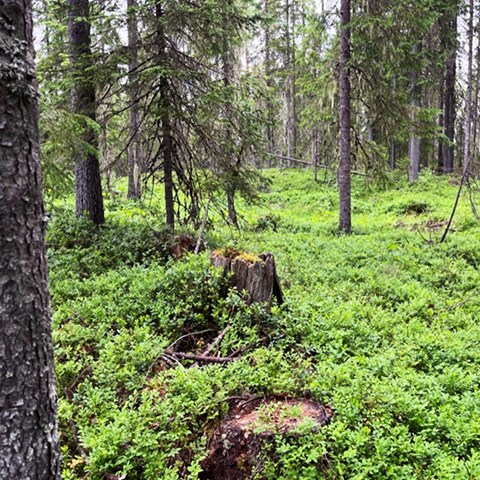Facts:
Facts about the project and collaborators
The project "Continuous Cover Forestry and its Effects on Biodiversity and Ecosystem Services in the Short and Long Term" is funded by the Swedish Research Council Formas and runs from 2022 to 2026. The research is conducted at SLU in collaboration with the Finnish Forest Research Institute LUKE in Helsinki and Uppsala University.
Facts about clearcut-free forestry
Clearcut-free forestry, as defined by the Swedish Forest Agency, involves managing forests without creating large clear-cut areas. It is a broad term that encompasses various ways of forest management.
Selective logging: Best suited for spruce forests in Sweden. It requires a forest with trees of all sizes in all parts of the forest, with significantly more small trees than large ones, known as a fully stocked forest. In continuous cover forestry, the largest trees are harvested at intervals of approximately every fifth to fifteenth year.
Gap-cutting: Involves creating smaller openings in the forest. The size of these openings should not exceed 0.25 hectares. As these openings fill in with new trees, existing openings can be expanded or new ones created. Chessboard logging is a variant of selective logging where harvesting occurs in a grid pattern, like a chessboard.
Shelterwood: Well-suited for light-demanding tree species such as pine. In the shelterwood system, a certain number of evenly distributed trees are retained during final harvesting. After the new forest is established, a proportion of the retained trees are harvested.
